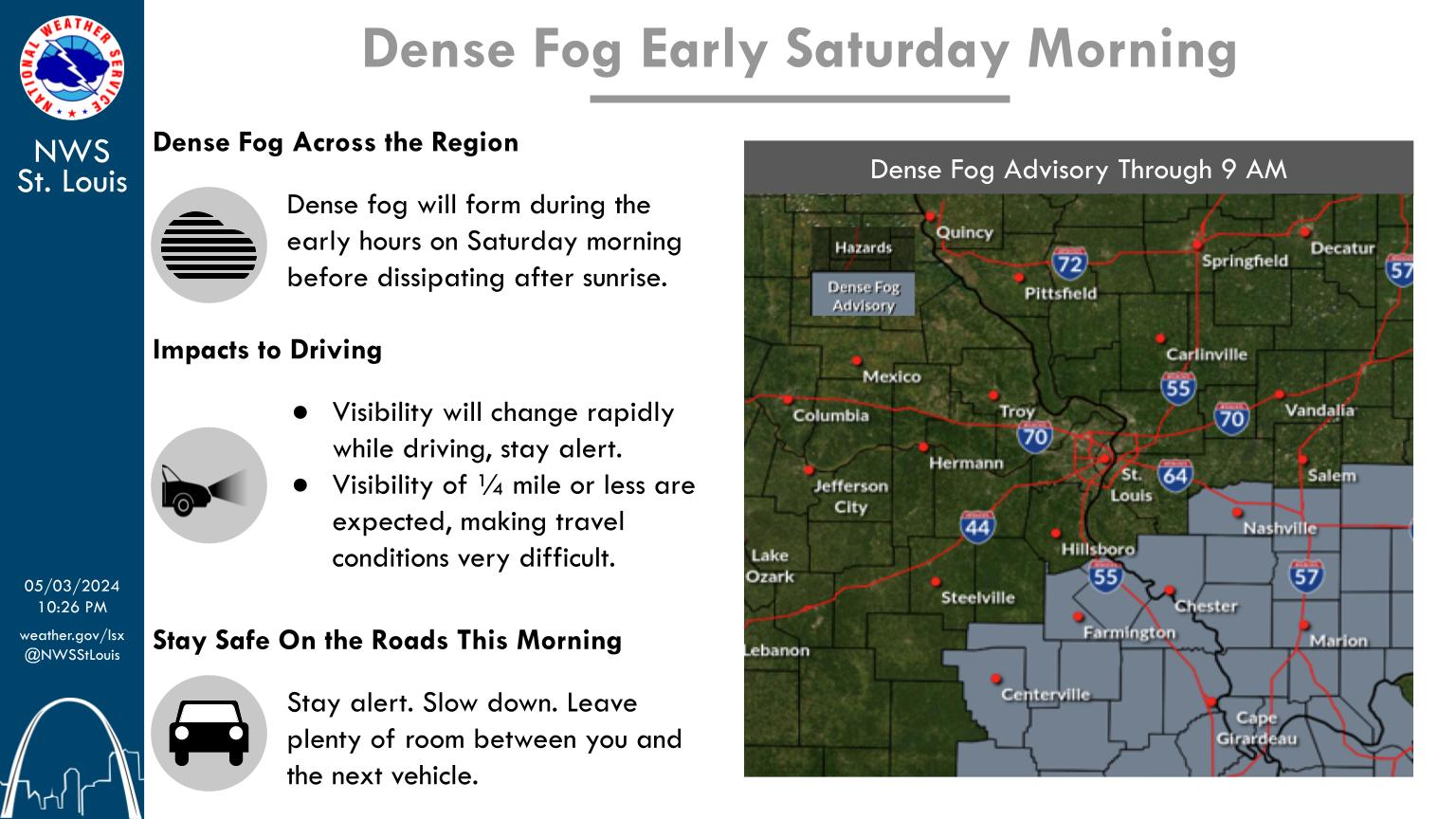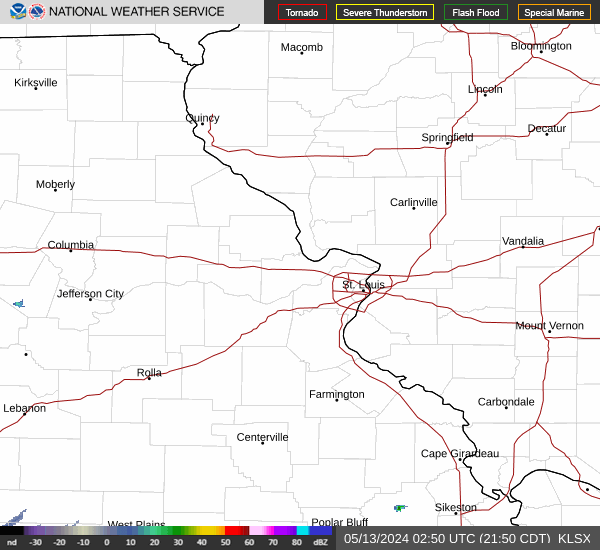St. Louis, MO
Weather Forecast Office
| The Climatology of St. Louis and the Bi-State Area |
|---|
|
St. Louis is located at the confluence of the Mississippi and Missouri Rivers, and near the geographical center of the US. Its position in the middle latitudes allows the area to be affected by warm moist air that originates in the Gulf of America, as well as cold air masses that originate in Canada. The alternate invasion of these airmasses produces a wide variety of weather conditions, and allows the region to enjoy a true four-season climate.
During the summer months, air originating from the from the Gulf of America tends to dominate the area, producing warm and humid conditions. Since 1870, records indicate that temperatures of 90 degrees or higher occur on about 35-40 days per year. Extremely hot days (100 degrees or more) are expected on no more than five days per year. Winters are brisk and stimulating, but prolonged periods of extremely cold weather are rare. Records show that temperatures drop to zero or below an averages of 2 or 3 days per year, and temperatures as cold as 32 degrees or lower occur less than 25 days in most years. Snowfall has averaged a little over 18 inches per winter season, and snowfall of an inch or less is received on 5 to 10 days in most years. Normal annual precipitation for the St. Louis are is a little less than 34 inches. The three winter months are the driest, with an average total of about 6 inches of precipitation. The spring months of March through May are normally the wettest with normal total rainfall of just under 10.5 inches. It is not unusual to have extended dry periods of one to two weeks during the growing season. Thunderstorms normally occur on between 40 and 50 days per year. During any year, there are usually a few of these thunderstorms that are severe, and produce large hail and damaging winds. Tornadoes have produced extensive damage and loss of life in the St. Louis area. |
FORECAST
Forecaster's Discussion
Local area
Activity Planner
Aviation Weather
Fire Weather
Marine Weather
Severe Weather
Winter Weather
Hurricane Center
FAA Center Weather
US Dept of Commerce
National Oceanic and Atmospheric Administration
National Weather Service
St. Louis, MO
12 Missouri Research Park Drive
St. Charles, MO 63304-5685
636-441-8467
Comments? Questions? Please Contact Us.


 Weather Story
Weather Story Weather Map
Weather Map Local Radar
Local Radar